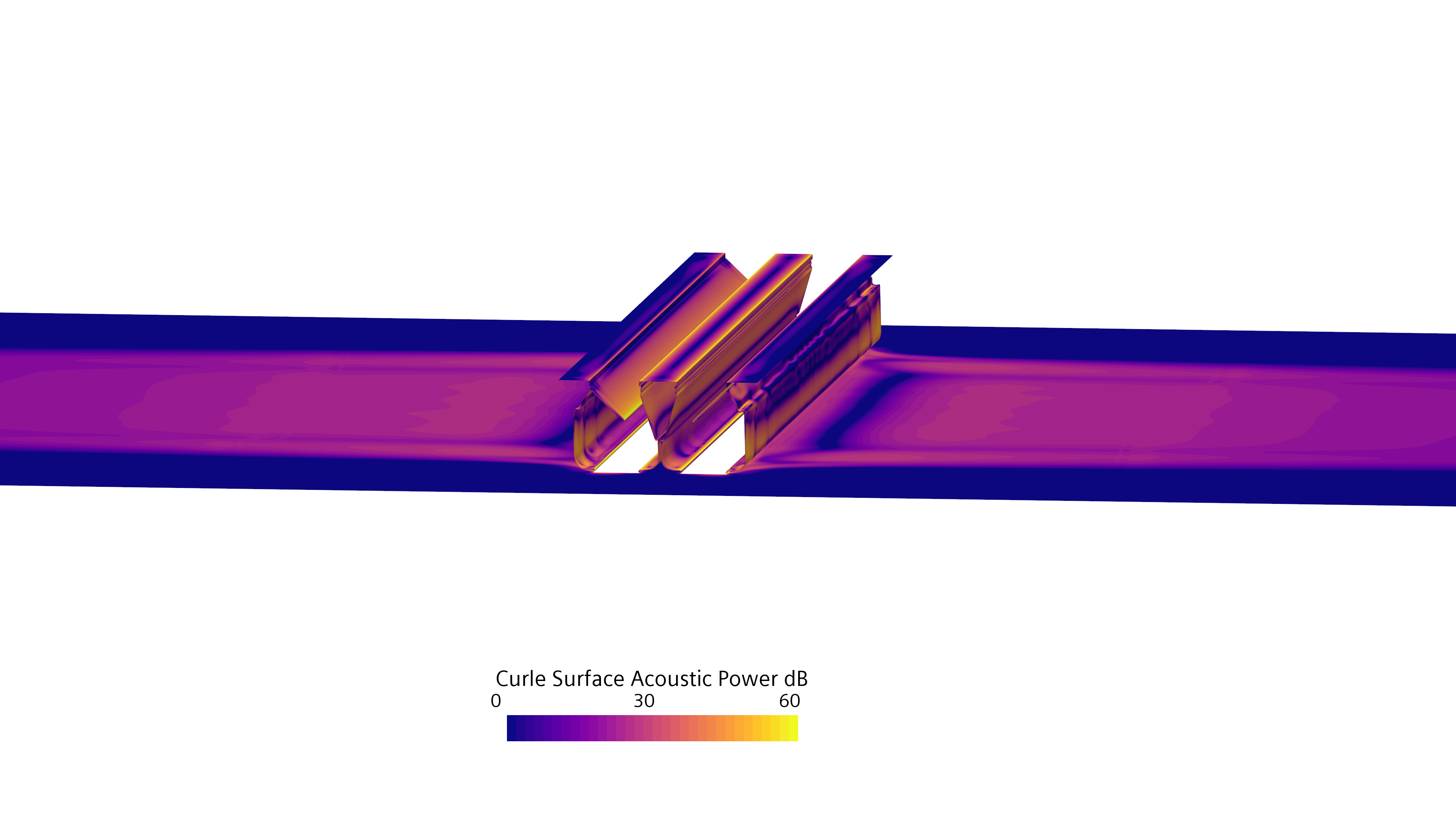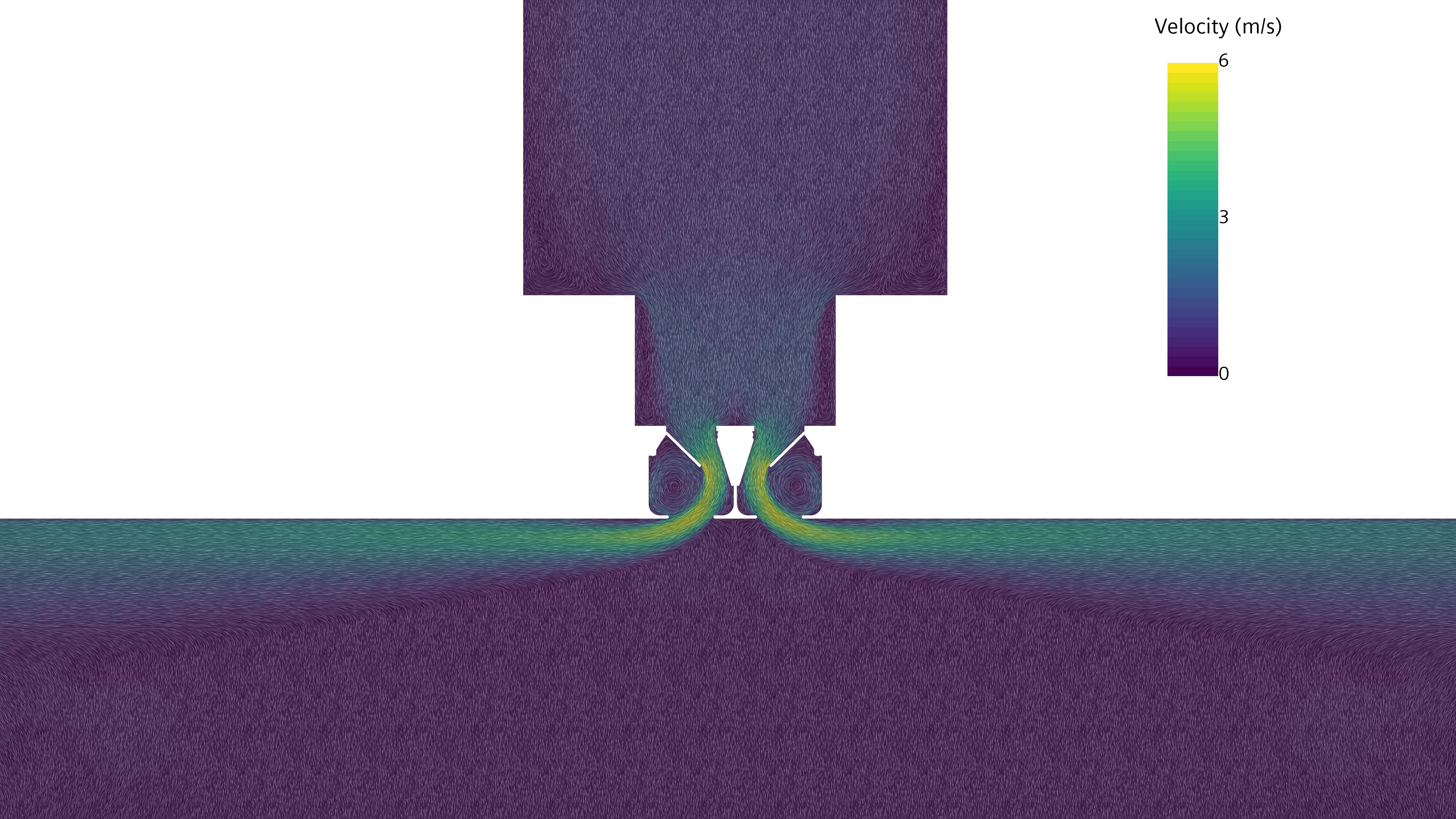Project
Aeroaccoustic Perfomance of Air Diffusors and Their Psychoactousic Evaluation
The aim of the research project is to predict the flow-induced aeroacoustic performance of air diffusors and to improve it by changing specific design parameters. The goal is to identify aeroacoustic characteristics of air diffusers and to quantify them in the early design process with the aid of suitable rating criteria. The usually used A-weighted sound power level, which may be supplemented by relative spectra or octave levels, only serves as a criterion to a limited extent and is therefore to be expanded to include a psychoacoustic analysis and assessment. On the basis of the rating criterion found, special design recommendations for air diffusors are then to be developed, which on the one hand increase the acoustic comfort of these systems and on the other hand do not impair the thermodynamic performance. Within the project four different diffusers are to be investigated: a 2-slot diffuser, a 4-slot diffuser and two swirl diffusers. While the two swirl diffuser are modeled with only minor geometric simplifications, the slot diffusers allow reductions in model size. The 2-slot diffuser is modeled with a length of 0.3 m, while the 4-slot diffuser is halved.
Project Details
Project term
December 3, 2021–December 10, 2022
Affiliations
RWTH Aachen University
Institute
Jülich Supercomputing Centre
Project Manager
Principal Investigator
Methods
A steady flow simulation is calculated to compute the noise emission with the help of the broadband source models according to Curle and Proudman. The model according to Curle yields the acoustic power level on surfaces and the model according to Proudman yields the noise based on free turbulence. The steady flow solution is used as initialization for a transient incompressible flow simulation. The transient flow simulation is needed to compute the time-resolved aeroacoustic processes based on the so called “Perturbed Convective Wave Equation”-Model. The computed acoustic pressure fluctuations are then transformed with a fourier transformation to generate the power spectral
density (PSD) using the P. Welch’s method. To validate the simulation measurements of the investigated diffusers are carried out and their respective power spectral densities are compared. The acoustic receiver position in the flow simulation is only several centimeters away from the outlet, while the microphone was positioned nearly 2 m away from the diffuser in the experiments. This is mainly due to limitations of the computational ressources. The distance difference will lead to different levels of the PSD but the proportions should still be comparable. Due to the size and complexity of the investigated diffuser geometries the produced flow models require computational grids with around 60 – 100 million cells. This is necessary to resolve the relevant flow scales that are responsible for the generation of the flow sound. The flow simulations aim at a resolved sound frequency of at least 3000 Hz. This requires a resolution of the mesh below 5 mm, which is further lowered by geometric features that require local refinements down to 0.25 mm. The required time step of the transient simulation to resolve the frequencies is 1e-5 s. To allow for comparable results between the different diffuser geometries all simulations are performed with the same target outlet velocities (4, 6 and 8 m/s). To achieve the desired outlet velocity a controller is implemented into the flow model, that adjusts the mass flow inlet boundary condition to reach the target outlet velocity.
Results
In the scope of a master’s thesis a generic slot diffuser was modelled. The evaluation of the broadband source models gave first indications of the most dominant sources of noise. The transient simulation was able to predict the emitted sound regarding shape of the PSD. The total noise level however was underpredicted. For three diffusers at least the broadband source models were already evaluated for the three different outlet velocities. The shortened 2-slot diffuser shows its most dominant noise sources where the flow hits the edges. A first transient simulation was carried out and the corresponding PSD was computed. The total noise level is in good comparison with measurements, when regarding the differences between simulation and experimental setup. Both swirl diffusers show strong noise emission at the inflow into their guide elements and in regions where the flow becomes detached.
A transient simulation of one of the two swirl diffusers shows significant deviations from the measured PSD. The second slot diffuser consists of a very complex geometry, which is why no final model yet exists.
Discussion
The shortened 2-slot diffuser simulation predicts noise that is in good agreement with the measured sound. The differences in overall noise level can be explained by the shortening of the diffuser and different inflow conditions. Especially the more perturbed inflow in the experiment is an additional noise source, that can not be captured in the flow model. The swirl diffusers require high cell counts (about 100e6 cells) due to their size and the required grid resolution. The broadband source models indicate plausible regions of noise emission. The predicted broadband noise levels scale with velocity as it is expected from literature. To reduce deviations between simulation and measurement another grid type (polyhedral instead of cartesian) is to be tested. By using an unstructured polyhedral grid sudden jumps of the grid resolution can be prevented and this reduced the danger of inducing spurious noise sources.
Additional Project Information
DFG classification: 402-04 Acoustics
Cluster: CLAIX
 Figure 1: Computed surface acoustic power of the diffuser geometry according to Curle’s broadband
noise model at an outlet velocity of 6 m/s.
Figure 1: Computed surface acoustic power of the diffuser geometry according to Curle’s broadband
noise model at an outlet velocity of 6 m/s.  Figure 2: Velocity field in the center of the diffuser at an outlet velocity of 6 m/s.
Figure 2: Velocity field in the center of the diffuser at an outlet velocity of 6 m/s.